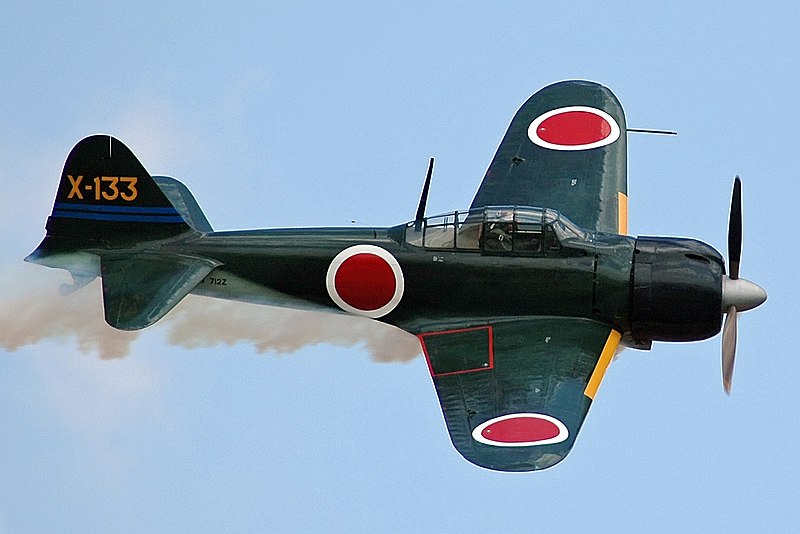My colleague Frank H. and I got together after work today for a game of
Midway (designers
Larry Pinsky and Lindsley Schutz, publisher
Avalon Hill). This was the very first wargame I ever owned, and the box shows that it has been a well-loved game over the 40 years that I have had it in my care.
Frank played the Imperial Japanese Navy, and I had the United States Navy. We played the Basic Game with the Tournament Game fighter rule added. We elected not to require the Japanese to reduce Midway before the invasion (because we agreed that it was a complication that made the Japanese position too difficult) and not to have surface combat (because that's just stupid in a carrier battle).
 |
| PBY Catalina - USN photo |
I played a relatively conventional (to me) American approach. I kept the American carriers and cruisers together for most of the first day, until I'd approached the theoretical limit of the IJN's advance, at which point I split out a couple of cruisers as pickets to augment the PBY Catalina efforts to track the Japanese fleet. I was discovered by Japanese searches a few times and so backtracked to break contact and evade being tracked. My maneuvers slowed my westward progress, and the IJN lead task force doubled back to await the arrival of more escorts, so there was no air action on the first day (3 June 1941). We both spent the night fueling and arming planes in anticipation of the next day's battle.
We were able to find each other immediately upon daybreak of 4 June, which turned out to be a bloody morning indeed. He had united the entire Japanese fleet - carriers and invasion force - except for two light cruisers for reconnaissance. Our strike pilots must have waved to one another as they passed above the Pacific, each seeking to deny the other a place to land when the fight was over. We had each split our fighters fairly evenly between Combat Air Patrol (CAP) and fighter escort, so the fighter pilots spent this first sortie jousting with one another but playing nearly no role in defending their respective fleets.
%2C_circa_in_late_1941_(NH_81313).jpg) |
| USS Hornet - USN photo |
The Japanese strike force sought to inflict the most damage by drawing antiaircraft fire away from the protection of the carriers and inflict hits on escorting cruisers as well. U.S.S.
Atlanta came under tremendous pressure but devoted her AA firepower to the torpedo bombers that targeted
Yorktown. The Japanese were able to sink both
Atlanta and
New Orleans and heavily damage
Hornet in that initial attack, but the strike aircraft were decimated in their dispersed, piecemeal approach runs that allowed every gun in the task force to find a target.
My tactical focus for the strike focus was exactly the opposite. I focused all airpower on sinking the
Atago, which served as the flagship for the invasion fleet. Part of my thinking was that I had already shot down a lot of Japanese planes, so the carriers were already less effective. But mostly I had my eye drilled on the prize - the protection of Midway Island from IJN troops. As it happened, I heavily damaged
Atago and suffered minor losses among my tightly concentrated aircraft, but sank no ships.
Our planes returned, and I decided that I was going to withdraw
Hornet from the front line to save her from the brunt of the second Japanese wave. So all fighters landed on
Hornet to serve as a CAP home base, and all strike aircraft were divided between
Yorktown and
Enterprise. Planes were fueled and loaded up, and they went at it again four hours later.
 |
| Mitsubishi A6M3 Zero |
For the second round of air operations, I held all fighters back on CAP and sent the strike force out unescorted. The Japanese had sent a third of their fighters as escort and held back two thirds on CAP. The fighter battle in the vicinity of the American fleet inflicted tremendous casualties on the Japanese Zeroes and still left me with a few fighters to augment ship defenses. But because I had divided my cruisers between two carrier task forces plus one on picket duty, I had only four cruisers defending two carriers. Despite a sound AA screen formation and residual fighters, the Japanese dispersed attack method (and some fortuitous die rolling) resulted in the sinking of both
Enterprise and
Yorktown in a single battle. It was not looking good for the Americans at all.
Meanwhile, my strike force on the heavily defended Japanese fleet did not fare so well. Although I succeeded in sinking the
Atago, my efforts to divide the Japanese AA defenses and inflict damage on carriers failed remarkably. In retrospect, my tactics were not well thought-out. I exposed a significant portion of the attack wing to AA fire that they might otherwise have avoided in a more concentrated strike (my preferred tactic). I lost a significant number of aircraft while scattering hits among three battleships and the
Hiryu. Having lost their racks, seabags, squadron support, and landing strips to the demise of
Enterprise and
Yorktown, the returning aircraft had to reach the more distant
Hornet on the remaining fumes of their tanks plus a generous tail wind. It was necessary to throw about six elements of F4F Wildcats overboard to make room for returning SBD Dauntless dive bombers.
 |
IJN Yamato
Government of Japan photo |
My third strike came at 1700, just in time to see
Yamato and her "little sisters" join the Japanese fleet. The IJN did not launch a strike against the American fleet, because her own attack wing had been so decimated that she need the arrival of
Hosho to replenish her Kate torpedo bomber strike force, which was fueling but not yet ready to sortie. All available Zeroes were waiting in CAP for the American strike force, which evaluated the Japanese deployment and eschewed attacking the damaged but heavily defended
Hiryu in favor of the smaller but vulnerable
Hosho with her flight deck full of readied aircraft. This focus shift proved fruitful, as
Hosho went down immediately, and her Kates with her.
The morning of 5 June,
Hornet had backtracked east to get within staging range of Midway, whose aircraft deployed to the deck of the
Hornet to replace all those planes lost in the
Hosho strike. Later that morning came one more exchange of air strikes, and it was at that point that we realized that the
Hornet and the seven remaining cruisers defending her would never be sunk by the few surviving Val dive bombers in the Japanese strike force. That meant that the Japanese had done all the damage they were going to do for the rest of the game.
 |
SBD Dauntless
Public domain |
|
The Americans, however, still had about a third of its original Dauntless dive bombers and a few Avenger torpedo bombers from Midway. In the fourth attack, I shifted tactics completely to pick on the cruisers at the outskirts of the AA screen. I heavily damaged
Mogami with minor losses to my strike force.
It was clear at this point that the Japanese were going to get no more points for the rest of the game, whereas the Americans had enough fight left to take out at least one more cruiser. That would suffice for me to pull ahead in victory points and win the game, so Frank graciously conceded and requested a rematch with switched sides at our next opportunity.
Final score:
Japanese (Frank H.)
10 for sinking
Enterprise
10 for sinking
Yorktown
4 for sinking
New Orleans
2 for sinking
Atlanta
26 total
Americans (Paul O.)
4 for sinking
Hosho
4 for sinking
Atago
3 for (presumed) sinking of
Mogami or another cruiser
16 for preventing invasion of Midway
27 total
It was a very fun game, but this was a narrow, Pyrrhic victory by any measure. Nimitz would not be happy with Spruance if he had returned on
Hornet with no other carriers and had meanwhile left the Japanese fleet largely unscathed. But Frank believes, and I'm beginning to agree, that the protection of
Atago and therefore the invasion of Midway is extremely difficult - perhaps impossible for the Japanese player. That 16-point deficit therefore makes it necessary for the Japanese to sink at least two and probably all three American carriers to win the game. And if the Americans sink one or two IJN carriers themselves, then the Japanese cause is daunting indeed. As it is, I won a narrow victory despite some serious tactical errors. I'm going to go back and brush up on some of the writing on this topic and think through how I need to attack and defend ships, as well as to revisit the Japanese position and strategy.
Submarines are so much easier to operate.



/pic2767039.jpg)

%2C_circa_in_late_1941_(NH_81313).jpg)



/pic189603.jpg)












:strip_icc()/pic742553.jpg)



/pic159125.jpg)

/pic195080.jpg)

/pic896670.jpg)







